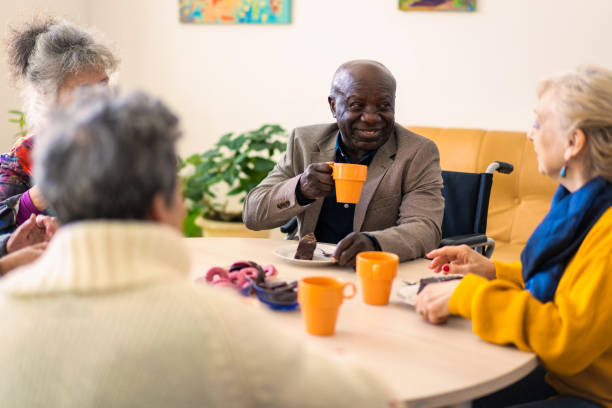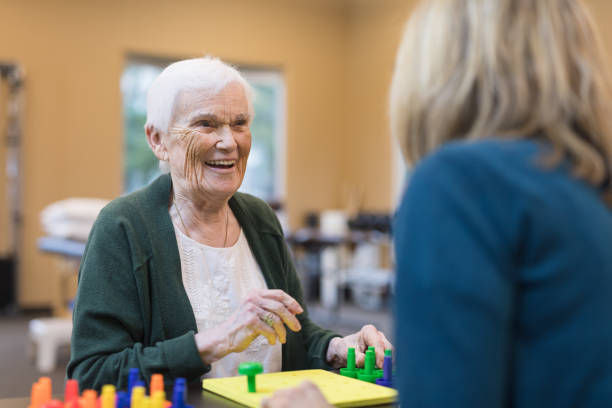In today’s aging society, providing quality of life for our seniors has become more important than ever. Assisted living facilities, with their focus on combining independence with support, play a pivotal role in achieving this goal. An often understated but vital aspect of assisted living is the opportunity for socialization it offers its residents. Social interaction is not just a mere pastime but a key component of physical and mental health, especially in eldercare.
Through a variety of activities and settings, assisted living facilities can provide environments that strongly encourage meaningful social engagement among residents, enhancing their overall well-being.
Contents
The Role of Activities in Promoting Socialization
To further explore the significance of socialization in assisted living, it’s essential to highlight the role of carefully curated activities. These activities are not just leisurely pursuits but are designed to encourage social interaction and promote physical and mental health. From group exercise classes to art therapy sessions and communal dining experiences, each activity is an opportunity for residents to connect, share experiences, and foster a sense of belonging and community.
Daily Social Activities
Assisted living facilities often organize daily social activities such as group exercises, art sessions, and game nights. These events are designed not just for enjoyment but also to facilitate interaction and friendship among residents. Regularly scheduled activities provide a routine that can help seniors feel more secure and engaged with their community.
Special Events and Celebrations
Beyond daily activities, special events and celebrations play a crucial role in enhancing social bonds within the community. Holidays, birthdays, and themed parties offer unique opportunities for residents to come together, share stories, and create new memories. These events also often welcome family members and friends, further enriching the residents’ social lives.
Outdoor Excursions
Even with a range of activities within the facility, trips outside the assisted living community are equally important. Visits to local attractions, shopping trips, and dining out can provide a change of scenery and a sense of adventure. These outings are not only enjoyable but also help maintain the residents’ connection to the broader community.
Through these various activities and events, assisted living facilities can foster a sense of belonging and community among residents, playing a critical role in their overall happiness and quality of life.
Enriching Mental Health Through Social Engagement

Mental health is as crucial as physical health, especially for residents in assisted living facilities. Engaging in social interactions and activities can profoundly affect seniors’ emotional and cognitive well-being.
Cognitive Stimulation
Activities that encourage socialization often incorporate elements of cognitive stimulation, which is essential in maintaining mental agility. Games such as chess, puzzles, and book clubs foster social connections and challenge the mind, helping to delay or mitigate the symptoms of cognitive decline often associated with aging.
Emotional Support
Social interactions in assisted living communities provide invaluable emotional support. Residents find comfort and companionship in shared experiences, reducing feelings of isolation and loneliness. This emotional support network is vital for maintaining mental health, as it encourages residents to express their feelings and concerns, knowing they are in a safe and understanding community.
Promoting a Sense of Purpose
Engaging with peers in various activities helps residents to feel a sense of purpose and belonging. Whether it’s contributing to a group project, participating in a volunteer activity within the community, or simply being part of a regular social gathering, these interactions promote a positive outlook and enhance life satisfaction among seniors.
Through these targeted strategies, assisted living facilities can significantly contribute to the mental well-being of their residents, illustrating the undeniable link between social engagement and mental health.
The Impact of Technology on Resident Engagement
In an era where digital technology is seamlessly integrated into nearly every aspect of our lives, its influence on enhancing the socialization and engagement of residents in assisted living facilities cannot be overstated. Technology is revolutionizing how seniors interact and engage with the world around them, from virtual reality experiences that simulate outdoor adventures to social media platforms that connect residents with their loved ones.
This integration of technological solutions in assisted living communities not only broadens the scope of activities available to residents but also serves as a powerful tool in maintaining and strengthening their social connections, a crucial aspect of their overall well-being and quality of life.
Integrating Technology into Daily Activities
Integrating technology into assisted living facilities’ daily activities offers innovative ways to enhance resident engagement and socialization. Digital platforms can facilitate group activities such as virtual reality (VR) experiences, which allow residents to explore new worlds together, or interactive game consoles that encourage physical activity and fun in a group setting. These tech-based activities provide entertainment and support cognitive stimulation and physical fitness.
Facilitating Communication with Loved Ones
Technology plays a critical role in maintaining connections between assisted living residents and their families. Video calling apps and social media platforms enable residents to keep in touch with their loved ones, sharing moments and fostering relationships despite physical distances. This digital communication is essential for residents’ emotional well-being, reducing feelings of isolation and promoting a sense of inclusion in their families’ lives.
Access to Online Educational and Cultural Resources
Assisted living facilities can utilize technology to offer residents access to a wealth of online educational and cultural resources. Online courses, virtual museum tours, and live-streamed concerts or lectures can significantly expand residents’ horizons, offering them new topics for learning and discussion. This access not only enriches their intellectual lives but also provides additional opportunities for social interaction and engagement with fellow residents who share similar interests.
Conclusion
Assisted living facilities play a crucial role in fostering social engagement among seniors. Through a combination of on-site and off-site activities, technology integration, and targeted strategies for promoting mental health, these communities can create an environment where residents feel connected, valued, and fulfilled. As we continue to age as a society, it is essential to recognize the importance of socialization in maintaining the well-being and quality of life of our seniors, and assisted living facilities are at the forefront of creating spaces that promote just that.

